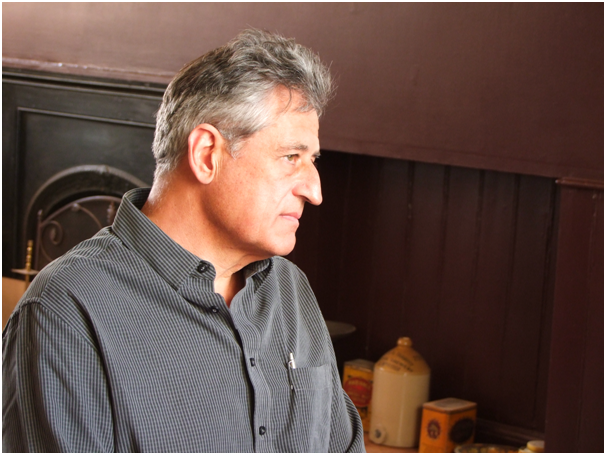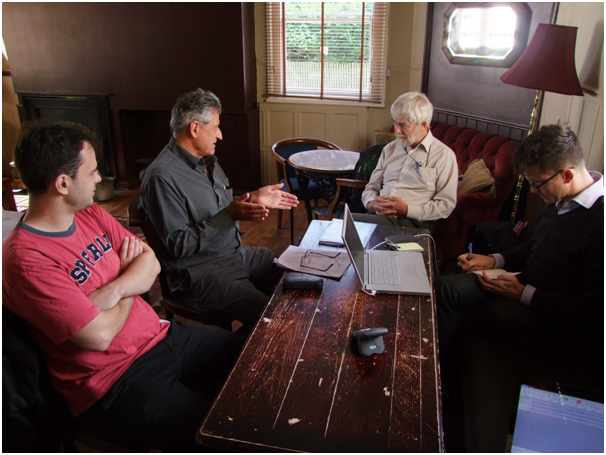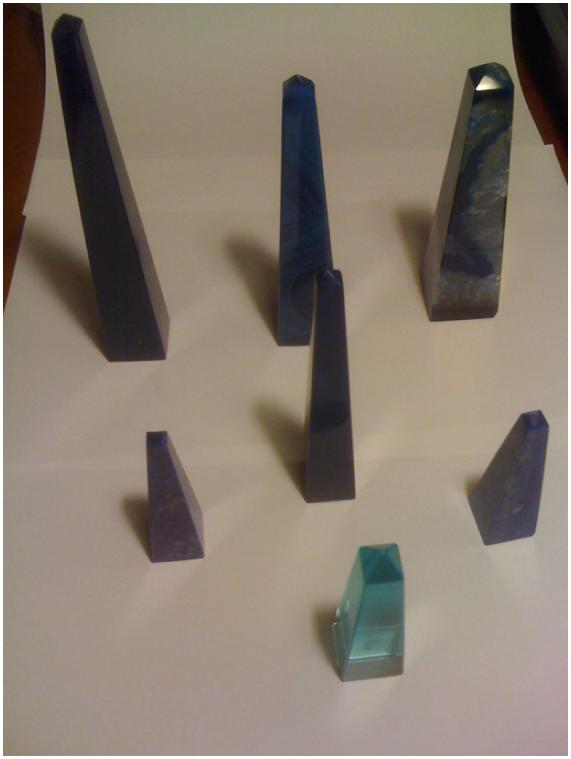Typed into Arcturus
Following on from our creation of the Panton Principles we are now starting a series of “Panton Discussions”. These are intended to explore in public, with a well-known guest, aspects of Open Data. They have a fluid format, which may well change as we progress.
We are delighted to be joined in the Panton Arms tomorrow (Tuesday 24th Aug) at 1200 by Richard Poynder (see http://www.richardpoynder.co.uk/ ). Anyone is welcome. – we’ve booked a room. Richard describes himself as:
Richard Poynder writes about information technology, telecommunications, and intellectual property. In particular, he specialises in online services; electronic information systems; the Internet; Open Access; e-Science and e-Research; cyberinfrastructure; digital rights management; Creative Commons; Open Source Software; Free Software; copyright; patents, and patent information.
Richard has contributed to a wide range of specialist, national and international publications, and edited and co-authored two books: Hidden Value and Caught in a Web, Intellectual Property in Cyberspace. He has also contributed to radio programmes.
Richard has interviewed a number of leaders in the Open Access and other movements and these interviews are highly valued.
We don’t yet know the precise form of tomorrow’s Discussion. We’d each put forward some topics/questions and I’ve listed these below. I doubt we’ll get through everything. We’ll probably start by sorting/triaging them.
The meeting will hopefully be recorded by us and we’d like to keep editing to a minimum. There won’t, by default, be a transcript unless someone volunteers. If there is a video it would be Openly published.
- Open Data is a relatively new phrase but is now being heard everywhere. What do you think has led to this?
- What can the Open Data movement learn from other Open movements (especially Access, but also Open Source)?
- Where should the open data movement put its initial energies? Should it try to tackle some well-defined issues or must it draw a wide plan of what needs to be addressed?
- Who are likely to be, or become, enthusiastic champions of Open Data?
- How can one build a successful business model (i.e. generate revenue) from Open knowledge. It’s worked in the limited area of ICT but there are few examples outside that?
What is open data, and why is it important? What’s the problem it needs to fix?
As [we] understand it there is both the Public Domain Dedication Licence and the Creative Commons Zero. What are these, how do they work, and how do they differ?
We also have the Science Commons Protocol for Implementing Open Access Data and the Open Knowledge/Data Definition. What are these? How do they differ? And why again do we need two initiatives?
And more recently we have The Panton Principles? What does this provide that was not available before?
Meanwhile Open Data has acquired a much wider definition now, covering for instance government and other public data? Is there some confusion around?
How many people have signed up to the Panton Principles?
Why have they not been endorsed by the Science Commons?
There was some disagreement I think in developing the Panton Principles I think, and so they represent a compromise. Who had to compromise over what and why?
Essentially we are talking about never using Non Commercial licences?
What about Share Alike? I guess it does not have to be Share Alike. So would it perhaps not fit Richard Stallman’s concept of freedom?
Bollier in his book Viral Spiral says that Open Data does not rely on copyright, and does not use a licence, but rather uses a set of protocols. Can you expand on this? It’s a public commitment basically is it?
The open data philosophy also talks of using norms. Can you say expand on this?
In the Panton Principles it says, “You may wish to take the ‘ask for forgiveness, not permission’ approach”. Isn’t that somewhat dangerous advice?
Why not cover the social sciences and humanities too?
Where does Open Data fit with Open Access?
You will note that the OA movement has now differentiated between OA gratis and OA libre. Does that help the cause of Open Data? (I.e. on re-usability)?
Where does Open Science fit in here?
What about Open Notebook Science?
Where does Open Data live: in institutional repositories, or in central archives like arXiv and PubMedCentral?
Earlier this year you got a SPARC Innovators Aware. Beyond that, do you have any figures to show the success you are having: the number of data sets with the Open Data Logo on for instance? Or the number of records now freely available etc.?
What advice would you give to any scientist seeking to make their data available today? What pitfalls do they need to avoid?
Where do scholarly publishers fit in here? Are they problematic?
Have all OA publishers now adopted Open Data too?




